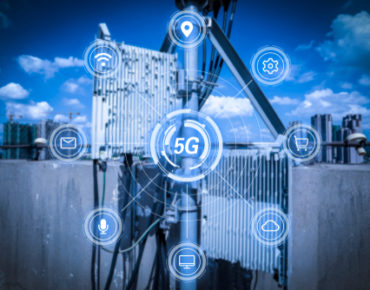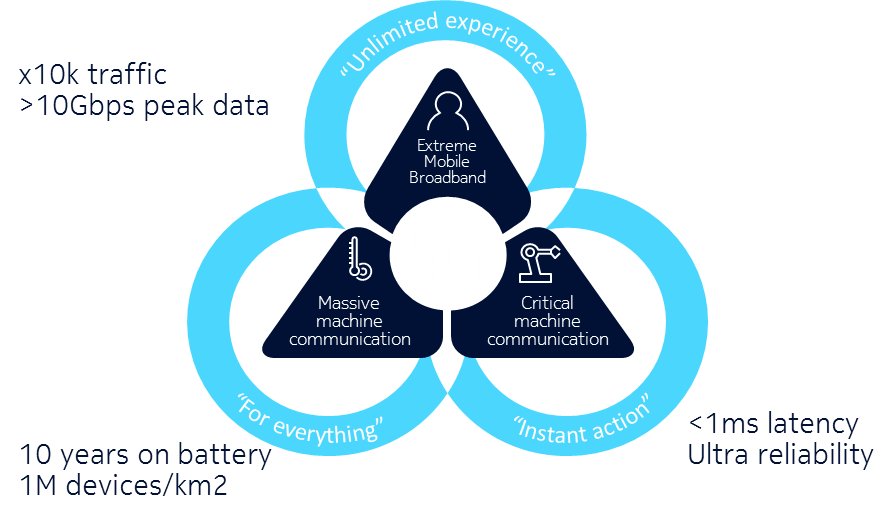5G Readiness Lags — Here’s What to Do Now

shutterstock_1262784598
The coming of 5G was one of the main themes at this year’s Consumer Electronics Show. Computerworld went so far as to say CES 2019 was “all about 5G,” reporting that every industry vertical was there to demonstrate how cloud, machine learning and IoT would combine use 5G to revolutionize operations.
But because it’s a mobile network technology, 5G needs to be implemented by the world’s telecom players. While they’re ready for some aspects of 5G, for those parts that are most interesting to industrial and commercial applications, they may not be ready as fast as you’d like. Despite the hype at CES, on the device and standards fronts – the kinds of 5G-enabled critical machine communications that would support automated manufacturing, for instance – are still a few years away.
The first wave of 5G services highlights at events like CES will look to end users like an upgrade from existing 4G/LTE mobile broadband services, meaning an increase in bandwidth (faster download and upload speeds) with peak data rates theoretically exceeding 10 Gbps, reduced network delays (latencies as low as 1 millisecond), and improved coverage in dense urban locations where dead spots are common.
Further, while 4G/LTE uses spectrum below the 6 GHz range, 5G opens up broad new ranges of spectrum bands in the both the low to mid-band ranges (especially in the 3.4-4.2 GHz range) that will further improve coverage, and in the high-band millimeter wave spectrum (24-28, 37-40 and 64-71 GHz range) that will increase capacity in urban hot spots. Combined, this additional 5G spectrum will enable networks to handle as much as 10,000 times the traffic per km2.
This first stage of 5G implementation, using new radios and new spectrum, is called the “non-stand-alone” version of 5G. It adds 5G new radio (NR) into an existing 4G/LTE network. New 5G capable devices are "dual-connected" to both 4G and 5G radios. This will be the quickest and least disruptive way to roll out the first wave of 5G enhanced mobile broadband (eMBB) services, pictured as the top circle in figure 1, including augmented reality, HD and ultra-HD video streaming, and gaming.
The full “stand-alone” version of 5G, as the name suggests, connects 5G-capable devices to 5G NR and then into a new 5G Core (5GC). This will be required to support massive machine-type (IoT) and mission-critical communications (high reliability and low-latency), shown at the bottom of figure 1. These 5G capabilities, which many industries are anticipating, won't be finalized until release 16 (early 2020) or even later, in release 17 (2021). This means that the 5G Industrial IoT (IIoT) devices likely won’t appear until 2022 at the earliest. So 5G IIoT is a few years away.
This is not all bad news, however. Enterprises can begin their digital transformation and so-called Industry 4.0 projects using private wireless services with 4G/LTE today. There are many industrial applications that can be implemented on either private or public-private networks using the large 4G/LTE eco-system of devices. Just as the transition by telecom operators to 5G will take place in stages, private networks can evolve through this 4G to 5G transition as well.
Take for example, a manufacturer that wants to replace its existing Wi-Fi/Ethernet network with a far more robust, secure and low-latency wireless network. Work stations and production lines that rely on Ethernet connectivity are not flexible, and Wi-Fi cannot meet the performance and bandwidth needs of the next generation of automation.
Rather than waiting for 5G, manufacturers can take the interim step with 4G/LTE which will meet many of the operational, flexibility, service agility and performance requirements to support their industrial applications. 4G/LTE is a well-defined and field-proven technology that's used by many industries (mining, utilities, health care and transportation). It has a wide and varied eco-system for device support, including sensors, AGVs, machine tools and robotics. And, of course, it is widely supported by telecom operators as well.
Enterprises can also deploy their own private networks using unlicensed or shared spectrum. In the US, the FCC has established Citizen Band Radio Services (CBRS) for shared spectrum in the 3.5 GHz (3550-3700 MHz) band. Alternatively, Multefire uses unlicensed LTE spectrum in the 2.4 and5 GHz range that peacefully co-exists with Wi-Fi but brings better performance and more robust capabilities. In both options, the enterprise deploys a 4G/LTE network by installing 4G/LTE small cell radios throughout their local operations together with a cloud-native EPC to support their scale and performance requirements that can be installed in their local IT data center.
With Multefire, hybrid private-public implementations are possible using, for instance, a private neutral-host 4G/LTE network for the enterprise's own local voice and data operations and connections to their HQ applications. It can also link to the telecom operator's 4G/LTE public network to provide their own services. As 5G standards are finalized and 5G spectrum becomes available, these private 4G/LTE networks can migrate to 5G with an upgrade to the small cells and a 5G Core, either standalone or non-standalone, depending upon the type of services needed. If the enterprise does not have the skill sets or interest in deploying and managing a private wireless network, there are also hosted 4G/LTE solutions from networking vendors available that provide an upgrade path to 5G.
Sorting out the hype and complexity of 5G can be confusing. There is a lot of justifiable excitement about 5G delivering massive scalability and bandwidth with both a significant improvement in performance and flexibility to deliver new and as yet to be defined services. But just like the telecom operators’ evolution to 5G, enterprises’ private wireless networks can also transition from 4G/LTE to 5G in stages.
For enterprises to remain competitive, it is critical to pursue a digital transformation if they are to survive in what will prove to be a highly disruptive marketplace. This transformation will eventually need 5G networking. In the meantime, fortunately, other options exist for both private and hybrid 4G/LTE networks to begin this digital transformation journey.
David E. Nowoswiat is a senior product and solutions manager at Nokia.











